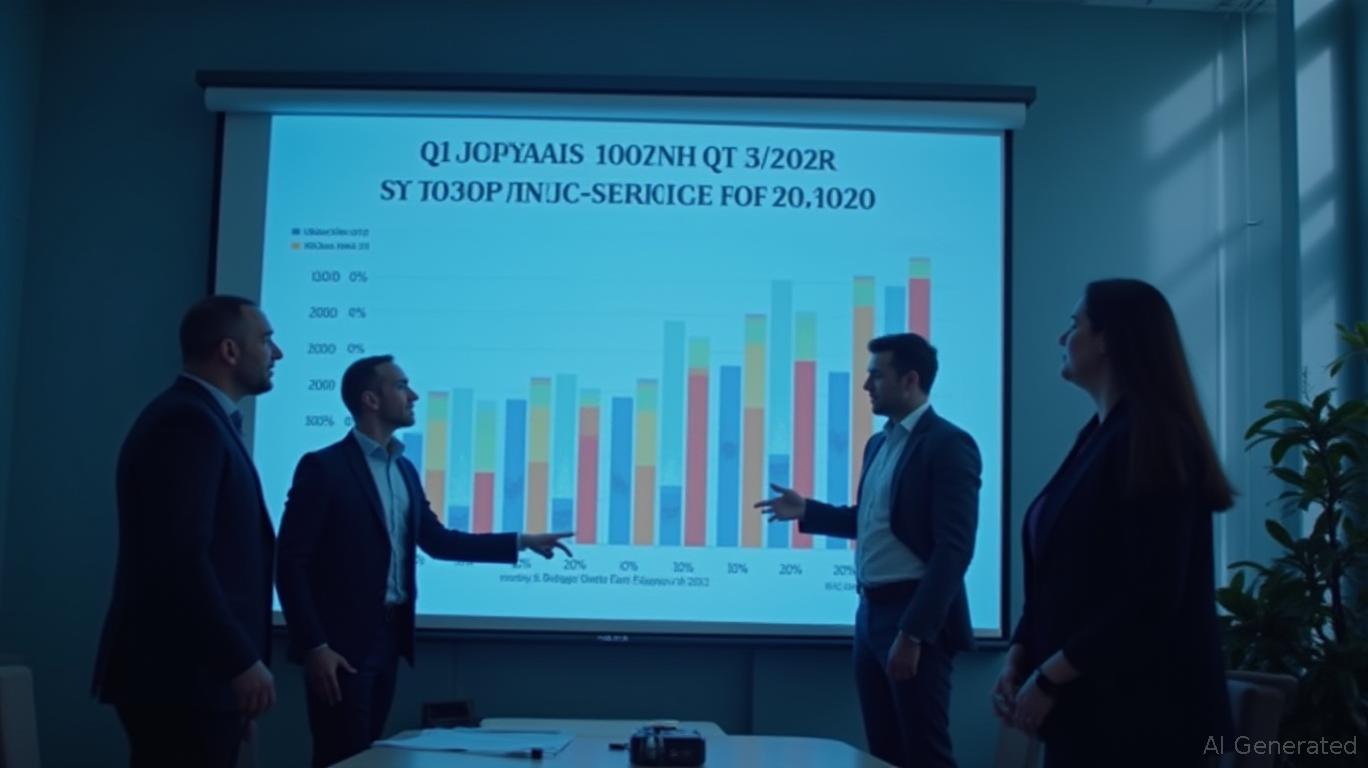The Resilient Consumer: Navigating Sector Rotation in a Slowing Growth Environment
The U.S. economy entered 2025 facing headwinds: a Q1 GDP contraction of 0.2%, persistent inflation, and a Federal Reserve cautious on easing monetary policy. Yet, beneath the surface, a critical force is at work—consumer income growth—defying the specter of recession and reshaping sector dynamics. For investors, this presents a strategic opportunity: rotate capital toward industries benefiting from wage resilience and discretionary spending, while navigating risks from eroding savings and uneven labor market trends.
Drivers of Income Growth: A Services-Driven Recovery
Recent data reveals a stark divide in the labor market. While goods-producing industries saw a $3.1 billion decline in wages in April 2025, services-producing sectors, including healthcare, education, and hospitality, posted a $53.1 billion rise in private wages and salaries. This shift reflects both structural demand for service-based roles and legislative tailwinds like the Social Security Fairness Act, which boosted benefits by 8.7% in 2025.
The result? Personal income rose 0.8% in April, with disposable income climbing to $189.4 billion—outpacing PCE growth (0.2%) for the second consecutive month. This divergence underscores a critical insight: income growth is unevenly distributed, favoring sectors where labor is scarce and policy support is direct.

The Spending Paradox: Services Thrive, Savings Deteriorate
Despite income gains, the personal saving rate dipped to 4.9% in April, a near-decade low. This reflects a stark reality: households are prioritizing discretionary spending in service-based categories while cutting back on durable goods. April's PCE data shows services spending surged 0.9% (led by transportation and healthcare), while goods purchases fell 0.4%.
This bifurcation suggests a sector rotation imperative: investors should favor companies exposed to services-driven demand while avoiding industries reliant on discretionary goods. The Federal Reserve's projections—projecting 2.6% consumer spending growth in 2025, down from 2024's 2.8%—add urgency to this strategy.
Sector Rotation: Where to Deploy Capital
- Healthcare Services: Rising wages in healthcare, combined with aging demographics, make this sector a durable play.
Example: UnitedHealth (UNH), which benefits from Medicare Advantage enrollment growth and telehealth adoption.
Transportation & Logistics: Services like ride-sharing and package delivery are insulated from inflation due to demand incommensurate with price rises.
Example: Lyft (LYFT), which has seen 15% YoY ridership growth despite gas price volatility.
Tech-Enabled Services: Firms with recurring revenue models (e.g., cloud software, cybersecurity) thrive in environments where consumer income is stable but savings are strained.
Example: Salesforce (CRM), which reported 13% revenue growth in Q1 2025, driven by enterprise SaaS adoption.
Underweight: Durable Goods Retailers: Companies reliant on discretionary purchases (e.g., furniture, appliances) face headwinds as savings rates trend downward.
Risks and Counterarguments
- Inflation Resurgence: Core PCE inflation remains at 2.5%, and if it breaches the Fed's 2% target, rate cuts may stall, crimping consumer sentiment.
- Wage Growth Sustainability: The services sector's gains may falter if productivity constraints or automation reduce labor demand.
- Debt Dependency: A savings rate at 4.9% implies households are relying on credit to sustain spending—a risky bet if unemployment rises.
Conclusion: A Balanced Playbook for 2025
The data paints a clear path: income growth is uneven but real, and it's fueling a services-led consumer economy. Investors should overweight equities in healthcare, transportation, and tech services while hedging against inflation and savings risks.
The Federal Reserve's expected 25-basis-point rate cuts this year may offer a tailwind, but the core strategy remains sector-specific: align with where income is flowing, not where it's fading. In a world of slowing growth, the resilient consumer is no myth—it's a roadmap.
Investment Recommendation:
- Overweight: UNH, LYFT, CRM (Tech Services)
- Underweight: HD (Home Depot), LOW (Lowe's)
- Hedge: Allocate 5% of portfolio to TIPS (Treasury Inflation-Protected Securities) to mitigate inflation risk.
The consumer may not defy the recession entirely, but those who follow income's lead will navigate it most adroitly.

Comments
No comments yet